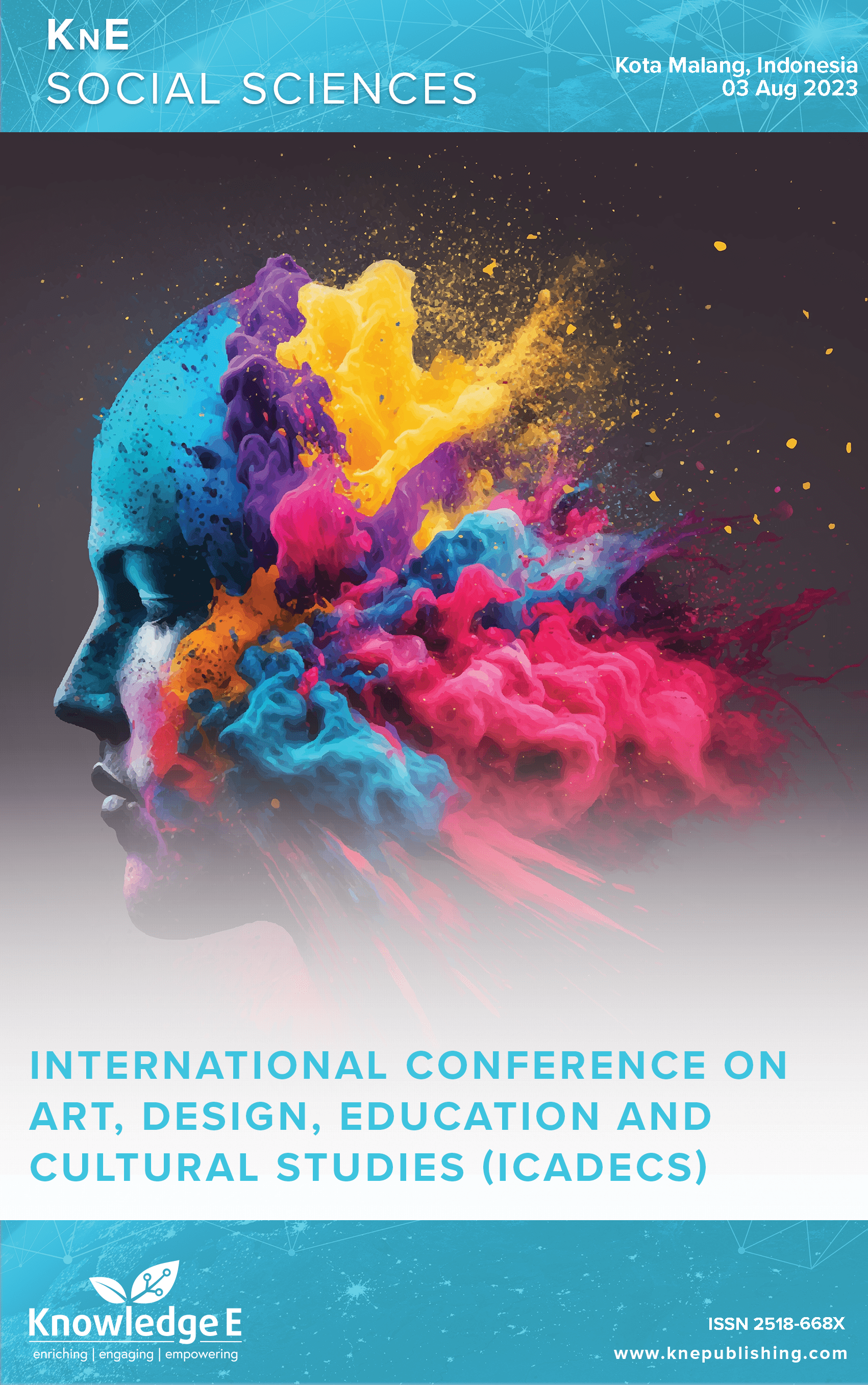Involvement as a Preventive Attitude towards Owned Culture
DOI:
https://doi.org/10.18502/kss.v9i15.16206Abstract
Preserving traditional cultures amidst modernization is a pressing concern that requires effective strategies engaging all generations within the community. This paper examines the importance of proactive involvement in safeguarding traditional cultures, focusing on the unique art tradition of the Alifuru tribe. Using a qualitative approach with a phenomenological lens, the study analyzes the Alifuru tribe’s approach to preventive involvement, especially among the youth, to ensure their cultural heritage endures. Preventive involvement targets young individuals during traditional events to counteract the perception of these practices as outdated. By incorporating art into rituals and entertainment, the community’s cohesion and connection are enhanced. The paper highlights that preserving traditional culture demands continuous regeneration, with the participation of both older and younger members being pivotal. Elders serve as mentors, displaying their artistic expertise as guides, while the younger generation takes on the role of students and successors in the cultural arts. The findings stress the profound impact of proactive involvement on knowledge transmission, particularly in the arts. The reciprocal proactivity between generations fosters an environment conducive to absorbing knowledge and preserving culture. Through a preventive approach, the Alifuru tribe effectively sustains their heritage while allowing for meaningful evolution. In summary, this study underscores the crucial role of preventive involvement in upholding traditional cultures. The Alifuru tribe’s approach, driven by the proactive collaboration of older and younger members, demonstrates the potential of intergenerational synergy. By embracing their art tradition and adopting a preventive cultural attitude, the Alifuru tribe navigates modernization’s challenges while ensuring a lasting cultural legacy.
Keywords: involvement, preventive, traditional art, Alifuru culture
References
Krugman HE. The measurement of advertising involvement. Public Opin Q. 1967;30(Winter):583–96. DOI: https://doi.org/10.1086/267457
Wright P. Cognitive processes mediating acceptance of advertising. J Mark Res. 1973;10(1):53–62. DOI: https://doi.org/10.1177/002224377301000108
Howard JA, Sheth JN. The theory of buyer behavior. New York: John Wiley; 1969.
Hupfer N, Gardner D. Differential involvement with products and issues: An exploratory study. In Gardner DM, editor. Proceedings: Association for Consumer Research. College Park (MD): Association for Consumer Research; 1971. pp. 262–9.
Clarke K, Belk RW. The effects of product involvement and task definition on anticipated consumer effort. In Keith Hunt H, editor. Advances in Consumer Research. Volume 5. Ann Arbor (MI): Association for Consumer Research; 1978. pp. 313–8.
Gilmore B, Ndejjo R, Tchetchia A, de Claro V, Mago E, Diallo AA, et al. Community engagement for COVID-19 prevention and control: A rapid evidence synthesis. BMJ Glob Health. 2020 Oct;5(10). DOI: https://doi.org/10.1136/bmjgh-2020-003188
Zaichkowsky JL. Measuring the involvement construct. Journal of Consumer Research. 1985;12(3). DOI: https://doi.org/10.1086/208520
Pérez-Gil J. Built ethnological heritage: From democratization to democracy. Arte, Individuo y Sociedad. 2022;34(2). DOI: https://doi.org/10.5209/aris.74451
Smart T, Green L. Informal learning and musical performance. In Rink J, Gaunt H, Williamon A, editors. Musicians in the Making: Pathways to Creative Performance. 1st ed. United States of America: Oxford University Press; 2017. pp. 108–25.
Rozi S, Ritonga AR, Januar J. ‘Local community-based disaster management’ The transformation of religious and local wisdom values in preparation to deal with natural hazards in West Sumatra, Indonesia. Jàmbá - Journal of Disaster Risk Studies. 2021;13(1). http://www.jamba.org.za DOI: https://doi.org/10.4102/jamba.v13i1.1020

